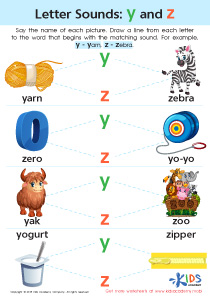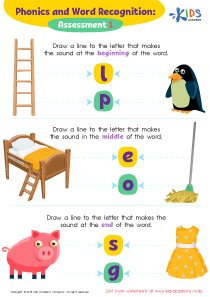Normal Ending Sounds Worksheets for Ages 4-9
5 filtered results
-
From - To
Discover our engaging Normal Ending Sounds Worksheets designed for children ages 4-9! These printable activities are perfect for helping young learners recognize and master the ending sounds of words, a crucial phonetic skill. Vibrant graphics and fun exercises keep children motivated and entertained while they build their literacy foundation. Whether you're a parent or educator, these worksheets fit seamlessly into any lesson plan. Encourage your child's reading and writing confidence by incorporating our expertly crafted ending sounds worksheets. Visit our page today and start a fun-filled learning journey to phonics success with Kids Academy!
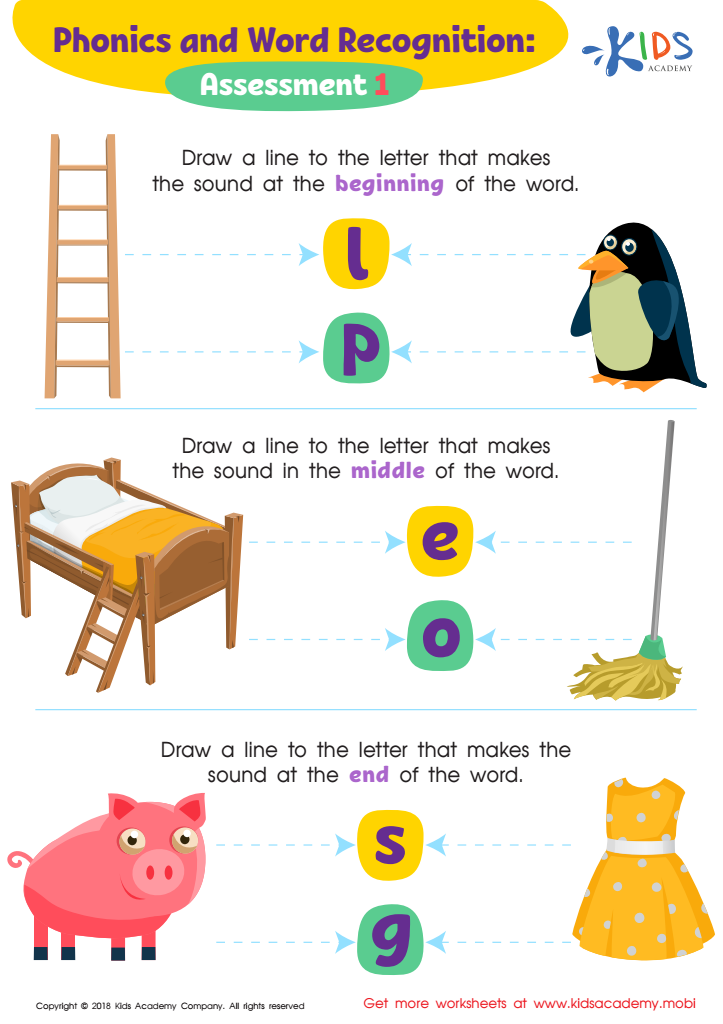

Phonics and Word Recognition: Assessment 1 ELA Worksheet
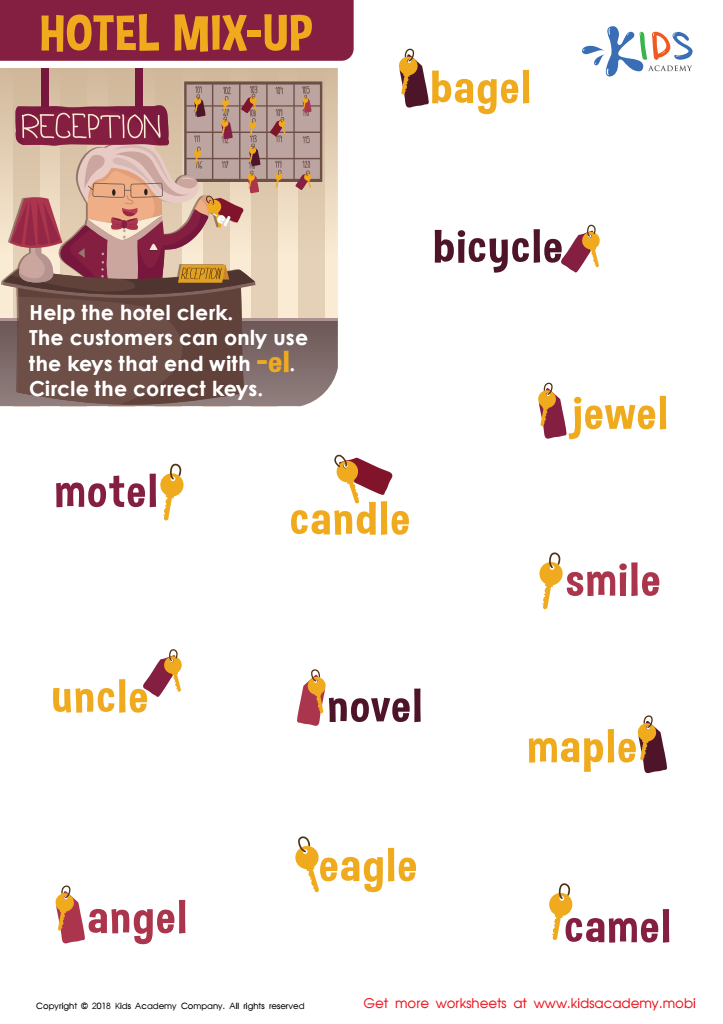

Hotel Mix-up Worksheet
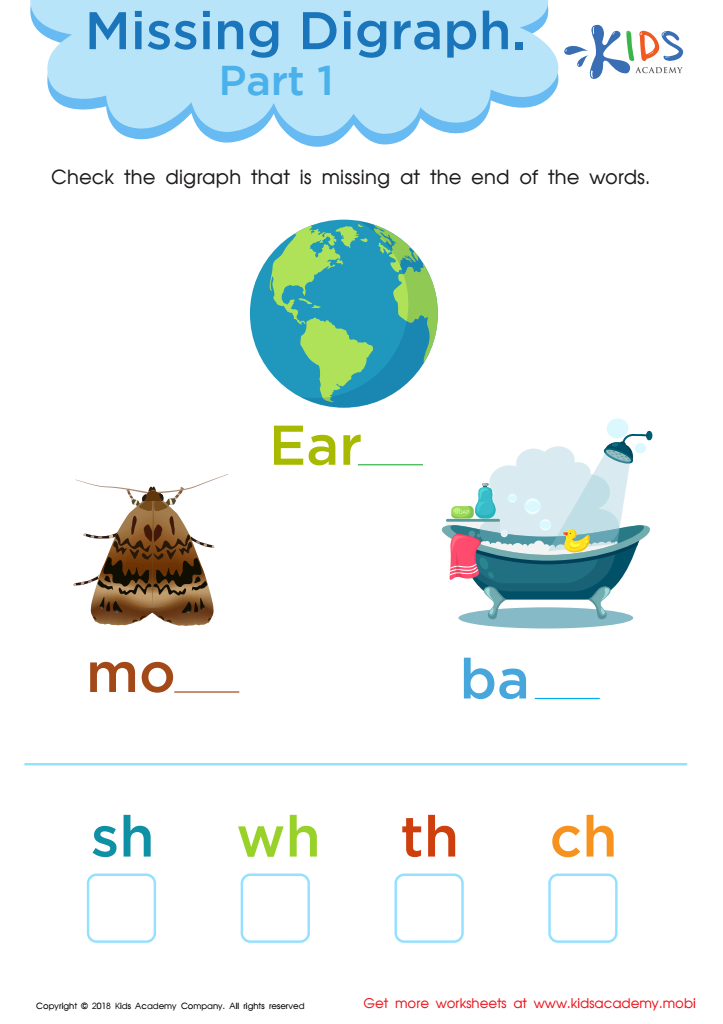

Missing Digraph: Part 1 Worksheet
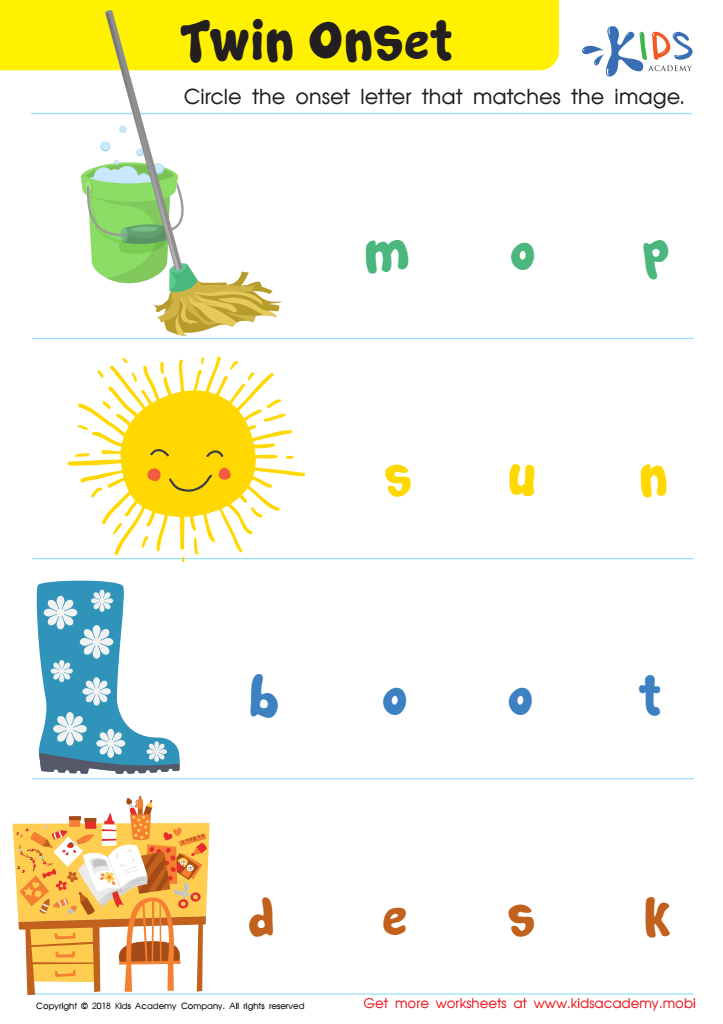

Twin Onset Worksheet
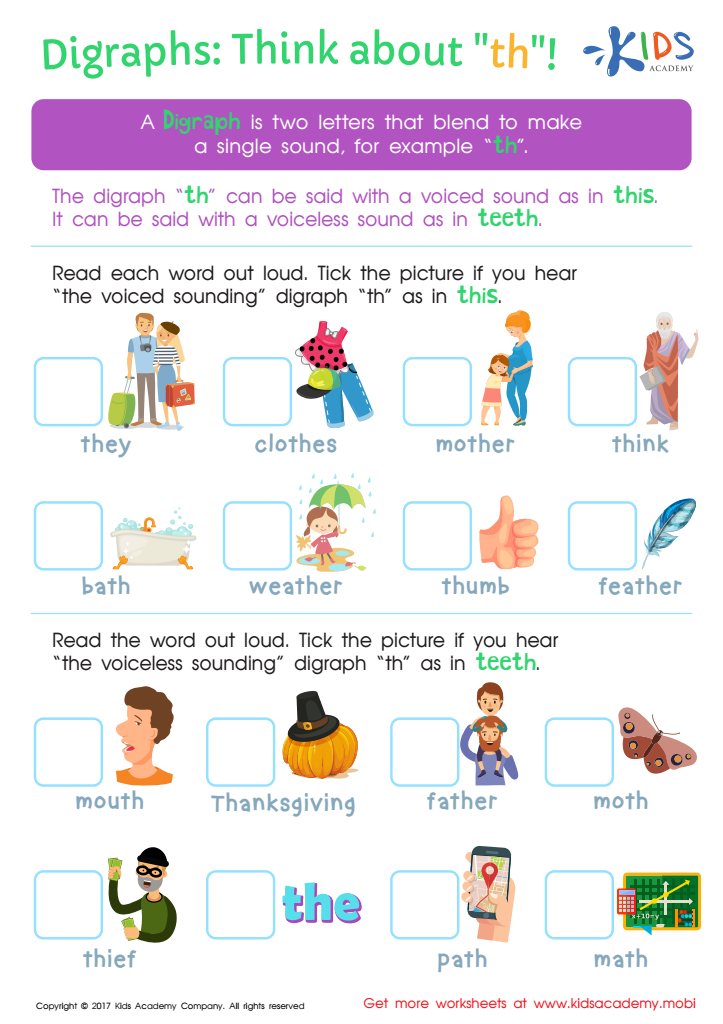

Digraphs: Think About "th" Worksheet
Understanding normal ending sounds in words is crucial for young children's language and literacy development. During the ages of 4-9, children experience rapid growth in their reading and spelling skills. Recognizing and producing accurate ending sounds help solidify their phonemic awareness, which is the ability to hear and manipulate the individual sounds in words. This is foundational for decoding words while reading and encoding words during writing activities.
Parents and teachers who emphasize ending sounds support the child's ability to differentiate between words like "bed" and "bet" or "cat" and "cap," ensuring clarity in communication. This distinctiveness is critical for both spoken and written language, reducing ambiguities and misunderstandings.
Moreover, proficiency in ending sounds aids in the development of accurate and fluent pronunciation, spelling, and reading comprehension. As children become more confident in these skills, their overall academic performance improves, fostering a positive attitude towards learning. Effective early intervention in recognizing and reinforcing ending sounds can also identify and support children who might have speech disorders or learning disabilities. In essence, paying attention to ending sounds creates a strong foundational skill that children will build upon throughout their educational journey.

 Assign to the classroom
Assign to the classroom




